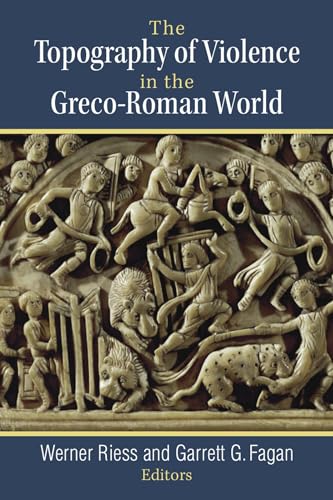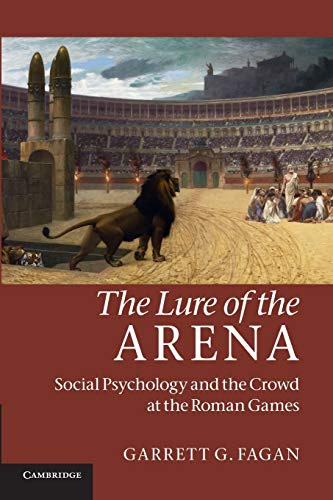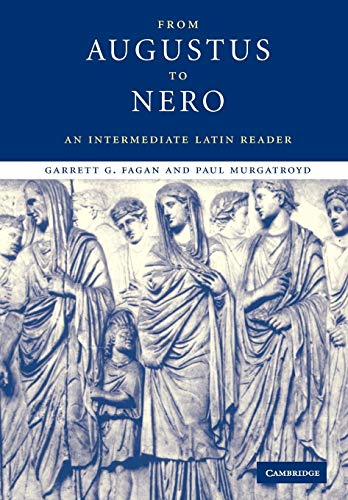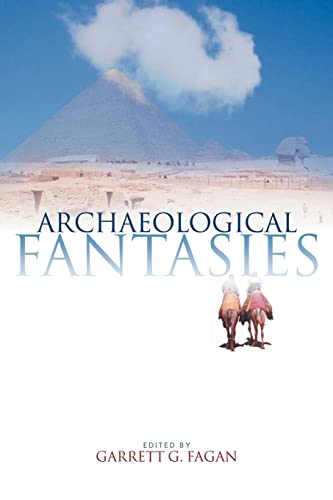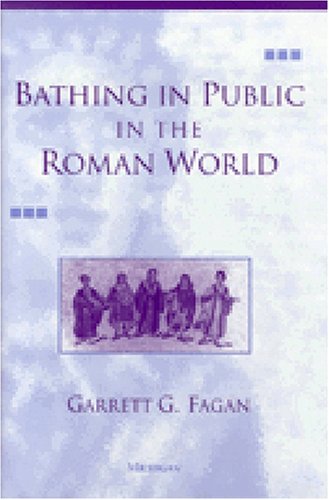Books by Garrett Fagan
The Topography of Violence in the Greco-Roman World
Author(s): Werner Riess, Garrett G. Fagan
Publication date: 2016-06-15
ISBN: 0472119826, ISBN-13: 9780472119820
What soldiers do on the battlefield or boxers do in the ring would be treated as criminal acts if carried out in an everyday setting. Perpetrators of violence in the classical world knew this and chose their venues and targets with care: killing Julius Caesar at a meeting of the Senate was deliberate. That location asserted Senatorial superiority over a perceived tyrant, and so proclaimed the pure republican principles of the assassins. The contributors to The Topography of Violence in the Greco-Roman World take on a task not yet addressed in classical scholarship: they examine how topography shaped the perception and interpretation of violence in Greek and Roman antiquity. After an introduction explaining the "spatial turn" in the theoretical study of violence, "paired" chapters review political assassination, the battlefield, violence against women and slaves, and violence at Greek and Roman dinner parties. No other book either adopts the spatial theoretical framework or pairs the examination of different classes of violence in classical antiquity in this way. Both undergraduate and graduate students of classics, history, and political science will benefit from the collection, as will specialists in those disciplines. The papers are original and stimulating, and they are accessible to the educated general reader with some grounding in classical history.
The Lure of the Arena: Social Psychology and the Crowd at the Roman Games
Author(s): Garrett G. Fagan
Publication date: 2011-03-28
ISBN: 0521185963, ISBN-13: 9780521185967
Why did the Romans turn out in their tens of thousands to watch brutal gladiatorial games? Previous studies have tried to explain the attraction of the arena by theorizing about its cultural function in Roman society. The games have been seen as celebrations of the violence of empire or of Rome's martial heritage, or as manifestations of the emperor's power. The desire to watch has therefore been limited to the Roman context and rendered alien to modern sensibilities. Yet the historical record reveals that people living in quite different times and circumstances (including our own) have regularly come out in large numbers to watch public rituals of violence such as executions, floggings, animal-baiting, cudgeling, pugilism and so on. Appreciating the social-psychological dynamics at work in attracting people to watch such events not only deepens our understanding of the spectator at the Roman games but also suggests something important about ourselves.
New Perspectives on Ancient Warfare (History of Warfare (Brill))
Author(s): Garrett G. Fagan, Matthew Trundle
Publication date: 2010-07-10
ISBN: 9004185984, ISBN-13: 9789004185982
Ten leading scholars of ancient warfare offer new insights on several aspects of military activity from the Later Bronze Age to the Roman Empire. They make significant contributions to understanding warfare on land and sea, to the social and economic aspects of war, and to battlefield experience. The studies illustrate the ways in which technology, innovation, cultural exchange and tactical developments transformed ancient warfare. Papers survey the armies of Assyria and Persia, the important role of navies and money in transforming Greek warfare, and how Romans learned to fight as soldiers and generals. New Perspectives on Ancient Warfare will inspire debate for years to come about the military systems of the ancient world.Contributors are Garrett Fagan, Matthew Trundle, Fernando Rey, Robin Archer, Chris Tuplin, Hans Van Wees, Louis Rawlings, Peter Krentz, Nathan Rosenstein and David Potter
From Augustus to Nero: An Intermediate Latin Reader (Cambridge Intermediate Latin Readers)
Author(s): Garrett G. Fagan, Paul Murgatroyd
Publication date: 2006-04-17
ISBN: 0521528046, ISBN-13: 9780521528047
The reigns of the Julio-Claudian emperors were characterized by murder and debauchery. This book presents a narrative of these reigns, ranging from Augustus to Nero, with passages in original Latin from Tacitus, Suetonius and Seneca. The text accordingly exposes Augustus' adulterous affairs; the depraved Tiberius; the extravagance and madness of Caligula; the ineffective Claudius; and Nero's artistic pretensions. Featuring a comprehensive introduction, detailed notes and an appreciation of each writer, the volume is essential reading for students who have completed an introductory Latin course.
Archaeological Fantasies: How Pseudoarchaeology Misrepresents the Past and Misleads the Public
Author(s): Garrett G. Fagan
Publication date: 2006-02-17
ISBN: 0415305934, ISBN-13: 9780415305938
This edited volume examines the phenomenon of pseudoarchaeology from a variety of perspectives. The engaging and stimulating essays, written by a diverse group of scholars, scientists and writers, explore issues including:
- the differences between real and pseudoarchaeology
- pseudoarchaeology's increasing popularity¬ and how the media, especially TV, has contributed to this
- the warping of genuine archaeology to fit national and other agendas
- pseudoarchaeology's potential risk to the genuine academic field of archaeology.
Including case studies such as the supposedly mystical Maya, Nazi pseudoarchaeology, ancient pseudohistory in modern India, and surveys of esoteric Egypt, this fascinating text will appeal to students of archaeology and ancient history as well as being of interest to the general reader.
Bathing in Public in the Roman World
Author(s): Garrett G. Fagan
Publication date: 2002-05-07
ISBN: 0472088653, ISBN-13: 9780472088652
For Romans, bathing was a social event. Public baths, in fact, were one of the few places where large numbers of Romans gathered daily in an informal context. They went to meet friends, drink wine, pick up sexual partners, and generally while away the idle afternoon hours. Despite the disapproval of the morally superior, the popularity of the baths endured for over a millennium and spread to every corner of the Roman world.
This book is the first to study the Roman public bathing experience primarily as a historical, social, and cultural phenomenon rather than a technological or architectural one. As a result, many issues are developed here that have to date been addressed only superficially. Fagan reconstructs what a trip to a Roman bath was like. He asks when and why the baths became popular at Rome, who built and maintained the abundant bathing establishments, and what sociological function the baths played in the Roman empire's rigidly hierarchical social order.
To throw light on these everyday topics the author deploys a wide variety of evidence, including literary allusions; the remains of the baths themselves, graffiti scribbled on bathroom walls; and, above all, formal inscriptions that throw light on the ubiquitous bathing culture.
In the course of this study Fagan challenges some widely held beliefs about baths, ranging from such broad notions of baths as palaces of public hygiene or places where the social identity of the bathers broke down, to more mundane matters such as the habitual donning of bathing costumes.
This volume will be of great interest for those studying luxury and public ostentation, municipal life, and the meaning of Roman leisure. Comparative evidence from other bathing cultures will also interest social anthropologists and historical sociologists.
Garret Fagan is Assistant Professor of Classics and Ancient Mediterranean Studies, Pennsylvania State University.
Penn State University : History
- Jessamyn Abel
- Eliyana Adler
- David Atwill
- Kathleen Baldanza
- Dan Beaver
- William Blair
- Jennifer Boittin
- Erica Brindley
- Tobias Brinkmann
- Jonathan Brockopp
- Gary Cross
- Sophie De Schaepdrijver
- Greg Eghigian
- Garrett Fagan
- Lori Ginzberg
- Amy Greenberg
- Jens-Uwe Guettel
- Ronnie Hsia
- Benjamin Hudson
- Anthony Kaye
- Michael Kulikowski
- Prakash Kumar
- Daniel Letwin
- Russell Lohse
- Bryan McDonald
- Kate Merkel-Hess
- Mark Munn
- On-Cho Ng
- Maia Ramnath
- Carol Reardon
- Matthew Restall
- A. Gregg Roeber
- Anne Rose
- Nina Safran
- Kathryn Salzer
- Crystal Sanders
- Tatiana Seijas
- Gregory Smits
- Catherine Wanner
- Nan Elizabeth Woodruff
- Ran Zwigenberg
Most popular books
Link to this page using the following URL: https://www.facultybookshelf.org/author/garrett_fagan
